This
post was originally published on
this siteOriginally Posted At: https://breakingmuscle.com/feed/rss
If you feel like your home workouts are getting a little monotonous, it’s time to switch some things up. Adding some versatility can help you stay consistent, but you might feel limited if your home gym space is on the smaller side. In addition, let’s face it, high-quality home gym equipment isn’t very budget-friendly. Therefore, what are your options when you want something inexpensive, fairly small, and that gives you flexibility with your full-body workouts?
We’ve found that resistance bands are an excellent choice for beginners and advanced trainees alike. You can incorporate them into your strength training routines and cardio sessions and bring them along with you when you’re on the go. However, not all resistance bands are alike. This is exactly why we’ve created our top picks for the best resistance bands.
So keep reading to find one that fits your preferences and doesn’t take up a lot of space!
Our Top Picks for the Best Resistance Bands
Best Resistance Bands Set: Living.Fit Resistance Bands
Living.Fit Resistance Bands
- Can buy a set of four, a set of six, or individual bands
- Loop-style design and 41-inch length
- Resistance levels range from five to 200 pounds
- Lifetime warranty
Check Price
Pros
- Includes door anchor and carrying case
- Four to six different resistance levels
- Lifetime warranty
Cons
- Doesn’t have handles
- Unable to buy the bands in pairs
- Bands not labeled with the resistance level
If your resistance training routine includes doing lots of pull-ups, you will want a set of resistance bands that can perform proficiently. After all, the last thing you want to worry about while doing upper body exercises is if your resistance bands can withstand the pressure. But is it really possible to find something that’s compact, affordable, and durable?
Well, the Living.Fit Resistance Bands may check all of those boxes.
You can purchase them as a set of four for $29.99 or six for $79.99, which is quite impressive, especially considering their practically unheard-of levels of resistance. The lightest band offers approximately five pounds of resistance, and the heaviest one offers 200 pounds of resistance. Given their range, these bands could be a good choice for someone who doesn’t quite know what they need yet or someone more advanced.
The Living.Fit Resistance Bands come with a door anchor so that you can do various push-pull exercises. However, what’s inconvenient about these bands is that you can’t buy them in pairs. For instance, if you wanted to add some bands to a barbell, you’d need to buy another set or an individual band. One other thing that’s a bit of a nuisance is that the resistance level isn’t labeled on the band, so you’d need to look it up each time until you memorize it.
While these certainly aren’t the cheapest bands on the block, they’re still a reasonable price considering what you get. They’re high quality and don’t have the rubber smell many bands come with, which is a bonus. And we can’t forget about the lifetime warranty either. If a band snaps, Living.Fit will replace it!
Best Resistance Bands With Handles: REP Fitness Tube Resistance Bands
Pros
- Budget-friendly
- Three levels of resistance
- No rubber smell
Cons
- Small handles
- Unknown pounds of resistance
- Less-than-ideal quality
Do you need low-cost rubber bands for warm-ups, stretching, and rehabilitation? If yes, the REP Fitness Tube Resistance bands might be a good choice for you. For just $25, you’ll get a set that lets you do different exercises that strengthen multiple muscle groups.
These tube bands provide three different levels of resistance: light, medium, and heavy. Each one is a different color so you can identify the level of tension. The nine-millimeter blue band provides light resistance, the 12-millimeter orange band bears medium resistance, and the heaviest band (13.5 millimeters) is black.
However, one flaw is that it’s still unclear how much tension you’re getting, as REP Fitness hasn’t disclosed this information. It also would’ve been helpful if the bands were labeled for easier identification.
One of the most appealing features, especially for someone looking to do bicep curls, is the band’s handles. Unfortunately, many may find these grip handles underwhelming. They’re not very ergonomically made, as they are small and not very grippy. As a result, they won’t feel as secure in your hands as you’d probably expect.
In addition, given their price point, you have to question the quality, and reasonably so. Although they’re said to be heavy-duty, the materials feel as though they were made at a bargain.
Nonetheless, if you’re a beginner or recovering from an injury and just need something that’ll get the job done, these will do. Plus, they don’t have that strong latex smell many bands are often known for.
RELATED: Best Kettlebells for Home Gyms
Best Resistance Bands for Building Muscle: Rogue Fitness Monster Bands
Pros
- Purchasable as a set, pair, and individually
- High-quality natural latex
- Eight bands to choose from
- Durable
Cons
- Pricier
- Overwhelming rubber smell
If you ask me, the Rogue Monster Bands have something to offer everyone. Whether you want to use them in your home gym or place them in your gym bag, these latex bands should deliver. With eight bands that span between 15 and 200 pounds of tension, you’ve got choices, and you’re not forced to buy a set. I like that you can buy a single band or get a pair, as that allows you to really customize it to your needs.
For example, if you’re looking for beginner-friendly bands or some ideal bands for pull-up assistance, their 15 to 50-pound mini bands should do the trick. For lower body workouts, like squats and those targeting the calves, hamstrings, and glutes, the 65- to 100-pound bands would be best. Then, the much heavier 140- to 200-pound bands are nice to pair with barbells for deadlifts.
These are the type of resistance bands you should be able to count on for a long time. They’re not poorly made, so you shouldn’t have to worry about them cracking or splitting.
However, as you might imagine, a higher price tag is attached to reflect the quality. Depending on the resistance level, one band could cost you between $15.50 and $61. To be honest, you can get a set of four resistance bands for less than the price of one of their resistance bands, as most sets cost between $20 and $80. But even considering that, they’re still more cost-effective and space-saving than getting free weights.
Rogue also lets you buy additional accessories to take your workout experience to the next level. They’ve got a door strap and handle you can purchase as add-ons, so you can use the bands in any room of your home with a sturdy door for stretching and mobility work.
Best Looped Resistance Bands: Titan Fitness Loop Resistance Band Multi-Pack
Pros
- Comes with eight bands
- Thicker than other bands
- One-year warranty
Cons
- Pungent latex smell
- Less exercise variability
The Titan Fitness Loop Resistance Bands are thick, well-made, and a good value for resistance band training. For less than $60, you get four pairs of non-slip bands that come with a one-year warranty. This speaks highly to Titan’s belief in its product, as you won’t find warranty coverage too often for bands.
These loop bands are color-coded for easy identification. Start with the red bands if you’re a beginner and/or doing physical therapy and looking for light resistance, like 15 to 30 pounds. When you’re ready to advance or implement calisthenics, move on to the black bands with 40 to 70 pounds of resistance. You could use the 60 to 100-pound purple bands for strength training with heavy resistance or the 70 to 120-lb green bands for advanced resistance training.
You can do many resistance band exercises with the Titan Fitness bands, but they are somewhat limiting. For example, you could use them with no problem during pilates and yoga, but I wouldn’t buy these if I wanted to do pull-ups. The bands are only 12 inches long, which is a little short. One user even stated that getting these over their shoes is challenging, which slows down their workout. Therefore, if you want bands for pull-up assistance, look for some that are at least 41 inches long.
Besides the noticeable latex smell, which should go away over time, and having slightly less exercise versatility, these bands are built to last. Titan Fitness even claims they have wear-resistant performance, so they shouldn’t lose their elasticity for a while.
Best Resistance Bands for Bodybuilding: Living.Fit Camo Resistance Bands
Pros
- Non-latex
- Multiple resistance options
- Includes door anchor and carrying case
- Cost-effective
Cons
- Cannot purchase individually
- No handles
If you’re a fan of camo, you’re in luck. These bands sport a cool design that is sure to stand out in your home gym or gym bag. In addition to their interesting aesthetic, they’re also fairly affordable. For less than $35, you’re getting a set of four durable bands. That’s basically like paying $8 to $9 per band. This is a reasonable price, especially considering how expensive buying fixed or adjustable dumbbells would be.
Each band is 81.9 inches long, but if you hold an end in each hand, it’ll be 41 inches on each side. That’s a lot of length, and this is what makes the bands ideal for doing pull-ups. Despite having different widths, such as the lightest one being 0.5 inches and the heaviest being 1.7 inches, they’re all 3.2 millimeters thick. Similar bands are around 4.5 millimeters thick, so these are on the thinner side.
The Living.Fit Camo Resistance Bands set pretty much caters to all fitness levels, but more advanced trainees might want something different, as the heaviest tension level is 125 pounds. This would fall short if you want a band with up to 200 pounds of tension.
However, this isn’t to say you couldn’t still get a good workout in. With four different resistance levels that range between five and 125 pounds, you’ve got options. For instance, the light resistance red camo band can be used for stretching and increasing your range of motion, while the black camo and purple camo bands can be used for speed training and curls. The green camo band has between 50 to 125 pounds of resistance, which can be great for lower body exercises, giving you versatility.
I also can’t forget to mention that these bands are made with synthetic rubber, so those with latex allergies still have a good option. It’s neat, too, that these come with a door anchor and carrying case, making them easily portable and giving you options for where you can use them.
Best Resistance Bands for Seniors: Gritin Resistance Bands
Pros
- Resistance level marked
- Priced under $10
- Very compact
- Comes with a carrying bag
Cons
- Somewhat flimsy and not ideal for strength training
- Limited exercise options
- Strong latex smell
As we age, our joints may become less flexible, which can limit our range of motion. However, using resistance bands, like the ones by Gritin, can help minimize the impact of such age-related changes.
Gritin Resistance Bands are some of the most affordable on the market. For almost $9, you’ll get five color-coded bands that are super lightweight and easily portable. The tension ranges from light to XX-heavy, but it’s not exactly clear how much tension in pounds that translates to. While that’s a bummer, the bands still stand out in other ways, such as being extremely beginner-friendly and easy to use.
Another factor that stands out to me is that these bands are clearly marked with their resistance level. Some of the most expensive bands on the market don’t have this feature, so it’s neat to see it here. This takes the guesswork out of the equation, allowing you to focus more on just completing your home workouts.
If you want to build muscle, these aren’t the resistance bands for you. They’re a bit too thin and flimsy to be used for advanced strength training. You could do exercises such as front squats with them, but you do have to worry about the bands slipping and riding up. In addition, at just over 21 inches long, they’re a little on the shorter side, limiting what exercises you can do.
Ultimately, if you’re looking for a set of bands that won’t break the bank, these could be a decent choice. Sure, you’re not going to get top-quality material, but they could suffice. You might also have to bare with their strong latex smell, but you could try setting the bands outside for a couple of days to see if that’ll air them out or wash them with mild dish soap.
Best Resistance Bands on Amazon: Fit Simplify Resistance Loop Exercise Bands
Pros
- Different color options
- Affordable
- Good value for the price
- Includes instruction guide
Cons
- Rolls up easily
- Sticky
- Tears easily
Amazon has become a go-to retailer for a lot of us, so naturally, if you need resistance bands, you’ll probably look there first. However, if you type “resistance bands” into the search bar, you’ll see several pages worth of options. And with so many choices, how in the world are you supposed to choose?
Well, to make it easier, we’ve identified the Fit Simplify Resistance Loop Exercise Bands as the best resistance bands from Amazon.
For less than $13, you’ll get a set of five elastic bands. They’re color-coded and have three different color options to choose from. For instance, there’s one set with an assortment of colors, including blue, green, yellow, black, and red. The other choices are berry and pink.
Conveniently, each band’s resistance level is labeled and ranges from x-light to x-heavy.
In my opinion, it would’ve been even better if the Fit Simplify brand had also added the pounds of tension to the bands. However, for the price, it’s good enough.
The amount of resistance each band provides is below:
- X-light – two to four pounds
- Light – six to eight pounds
- Medium – 10 to 12 pounds
- Heavy band – 15 to 20 pounds
- X-heavy – 25 to 30 pounds
You could also stack them to get a total of 74 pounds of resistance. These admittedly don’t pack a lot of tension compared to other bands, but if you’re a beginner or getting physical therapy, these should suffice.
Many consumers seem satisfied with the bands, noting that they’re good quality and very durable. But don’t expect these bands to last a very long time. While it depends on what you use the bands for and how often you use them, you may get one to two years of use out of them.
Best Fabric Resistance Bands: Arena Strength Fabric Booty Bands
Pros
- Includes workout guide
- 12-month warranty
- Good quality
- Unbreakable
Cons
- Too small for some
- Not enough tension for advanced trainees
Some of us want to work on our arms, and some of us want to work on our calves. However, others are very clear that they want to do resistance band exercises for glute activation. The Arena Strength Fabric Booty Bands may be ideal for those looking to enhance their lower body.
For $29, you’ll get three bands. You can select the pack with gray, blue, and black bands or the one with pink, gray, and black bands. Each band is the same size, but they have different resistance levels. The gray band is 23 to 33 pounds, the pink and blue bands are 34 to 44 pounds, and the black band is 45 to 55 pounds. Some people may find that this isn’t enough pounds of tension to help them meet their needs, but they’re good for light warm-up exercises or beginner-friendly workouts.
What really makes these bands different from many others is that they’re made with fabric — cotton, to be specific. Their triple-stitched interface makes them practically unbreakable, and they also don’t roll. This is important, as some other bands tend to slip when you’re doing lunges, hip extensions, deadlifts, and more. Latex grips are sewn inside the bands to help them stay in place.
This set includes a 15-page workout guide that was developed by CrossFit coaches. You also get a handy-dandy carrying case so you can bring them with you when you’re on the go. What’s even better is that these bands come with a 12-month replacement warranty. Therefore, if you’re not satisfied, the company will give you your money back.
One complaint that some users had is that the bands are too small if you’re not skinny. These bands are 25 inches in loop diameter, which is a little on the short side. If you fear that that size wouldn’t work for you, Arena Strength offers longer bands that are 42 inches long.
RELATED: Best Home Gym Machines on the Market
How We Chose the Best Resistance Bands
At Breaking Muscle, we underwent a tedious process to identify which bands were the best of the best. First, we considered what we’d heard from members of the fitness community, as people who work out will tell you what they did and didn’t like about a product. In addition to that, we perused the internet to identify what resistance bands consumers seemed to gravitate towards. Then, once we completed our list, we began sifting out what didn’t make the cut.
Many factors went into which resistance bands would remain on the top-pick list. For instance, we wanted to ensure something for everyone, so we aimed to include bands at different price points. After all, we’re all working with different budgets. Being mindful of the various resistance levels out there was critical as well. You may need more or fewer pounds of tension depending on your fitness goals and health. We also couldn’t forget about the material, as some users are allergic to latex.
All of these factors helped us narrow it down to the list we’ve presented here.
Benefits of Resistance Bands
If you’re in the process of buying equipment that you can utilize during your home workouts, resistance bands are a great choice. Here are a few reasons why you should add these to the cart.
Beginner and Advanced Trainee Friendly
When you’re new to working out, resistance bands are one of the least intimidating pieces of fitness equipment you’ll come across. You can use them while standing up and sitting down, thus catering to where you are in your journey. For advanced trainees, like those doing calisthenics, strength training, and pull-ups, these small but mighty things will make you sweat.
A Cost-Effective Choice
On average, dumbbells cost about $1 to $2 per pound, which can add up very quickly. So if you wanted two 50-pound dumbbells, you’d likely be out $100. Even with the best-quality resistance bands, you won’t experience that. As you saw above, you can easily get a set of four to six bands for under $100. Some of these bands even have 200 pounds of tension. Therefore, they’re a great choice if you’re on a budget for your home gym.
Compact But Challenging
Besides resistance bands, where else will you find 200 pounds of tension that you can toss in your bag without it weighing you down? These bands are incredibly lightweight and portable, making them an obvious choice when you want something you can take along with you when you travel or do workouts at the park.
What To Look For When Buying Resistance Bands
Buying resistance bands should be a very intentional process. I can still clearly remember the first time I bought a set. Honestly, they were very cheap, so I shouldn’t have been shocked at how flimsy they were. They kept rolling up while I did squats, and after a few months, one of them eventually snapped and popped me right on the thigh. I was also repulsed by the strong latex smell and powdery residue on the bands. This experience initially led me to believe all resistance bands were like that, but that’s not true. So, here’s what you need to look for!
Price
Before you go searching for resistance bands, the first thing you need to decide is how much you’re willing to spend. Once you’ve determined your budget, get an idea of how many bands you want. Do you wish to purchase them individually or as a pair? Are you looking for a set of four to eight, or do you want a single band? Whatever you come up with, keep that and the price in mind as you shop around.
Do understand that cheaper bands aren’t going to have the best quality, but that doesn’t mean they can’t get the job done. The list above includes a set of bands as low as $9 and even some that are almost $80. Consumers have gotten immense value out of bands at every price point.
Materials
Raise your hand if you have a latex allergy. If you do, you’ll want to be extra cautious, as most bands are made with latex. For an option that doesn’t cause an allergic reaction, opt for bands made with synthetic rubber, like the Living.Fit Camo Resistance Bands.
Style
An elementary mistake to make on your hunt for resistance bands is assuming that they’re all the same. However, they most definitely are not.
Loop bands, like those provided by Titan Fitness and Fit Simplicity, are flat and form a continuous loop. They can be used for upper body and lower body movements. Typically, the lighter resistance bands are used for the upper body, and the heavier ones are used for squats and other lower body exercises.
There are also tube bands, like the ones created by REP Fitness. These have handles on each end, which are helpful for new trainees. In addition, tube bands are great for enhancing your range of motion if you’re doing physical therapy.
Pull-up bands, like the regular Living.Fit resistance bands, tend to be best for upper body movements. If you’re trying to improve your bodyweight training routine, these should help. They’re often lengthier and will be about 41 inches long, compared to others that are only 12 inches long.
Amount of Resistance Provided
Another factor you must consider when hunting for resistance bands is the amount of resistance provided. Some people like to buy a set that includes a range of different resistance levels. This is ideal if you’re completely new to resistance bands and want something that can grow with you.
You also have to ask yourself what workouts you plan on doing. If you’re doing rehabilitation, maybe extra light bands that provide five to 10 pounds of resistance are better. But if you’re doing advanced strength training, you’ll probably want the extra heavy ones that offer 100 pounds of resistance. Be realistic about your needs so you can get an option that works for you.
Best Resistance Band Workouts
What I love most about resistance bands is their versatility. Here are some workouts you can do with this multifunctional item.
- Variable resistance training – This is when you add an elastic band to your bar before you lift. Banded deadlifts and bench presses are excellent examples of this.
- Yoga – You could implement bands while doing the downward-facing dog or plank.
- Pilates – Do leg openers by looping a band around your ankles while lying on your side.
- Bicep curls – To do this, grab some resistance bands with handles. You’ll want to stand on the center of the band while keeping handles at your side, then slowly curl your hands up to your shoulders.
- Lateral raise – With your feet shoulder-width apart, stand on the center of the bands, hold the ends of the band in each of your hands, and raise your arms out to the sides. They should be parallel to the ground.
- Push-ups – To complete a banded push-up, you’ll want to place the band behind your back, under your arms, and then loop it through the palm of your hands.
- Glute bridges – Simply put the band around both of your thighs (ideally right above the knees) and, while lying on your back with your knees bent and feet flat on the floor, raise your hips toward the sky.
- Tricep kickback – These are best done with a resistance band set that includes a door anchor and handles. Secure the bands to the anchor, and bend at the knees while keeping your back flat. Then pull the bands back with your forearms.
- Bent-over row – Stand in the center of the bands while slightly bending forward. Grab the bands on both sides and lift the bands up towards your upper rib. Lower them and repeat.
Final Thoughts
For those looking for budget-friendly equipment that lets you take your resistance training routine to the next level, consider resistance bands. However, don’t go shopping for just any bands. Consider our top picks above for the best resistance bands to help you make your decision.
We’ve already done the heavy lifting for you by considering the different price points, materials, styles, and more. Therefore, all you’ve got to do is determine which one of these is best for you.
For under $100, you can totally advance your cardio and strength training sessions. So, which ones are you going to go with?
FAQs
Which resistance band is best?
Which resistance band is best depends on your preferences, lifestyle, and fitness goals. For example, if you want to improve your upper body strength, consider pull-up bands like the Living.Fit resistance bands. Or, if you want to tone up your glutes, think about loop bands with heavier resistance, like the loop band multi-pack from Titan Fitness. Just keep in mind that what works for someone else may not be ideal for you.
Who makes the best resistance bands?
REP Fitness, Rogue, and Titan Fitness are some of the top contenders for the best resistance bands. However, smaller and less well-known brands like Living.Fit and Gritin produce high-quality resistance bands, too.
What are the safest resistance bands?
The safest resistance bands are likely those that are made with high-quality materials like latex. Poorly made loop bands, in particular, sometimes don’t stay in place, which could make them a tripping hazard or cause them to snap during your workouts.
What strength resistance bands should I use?
The strength of your resistance bands depends on your experience level. If you’re unsure of which ones to get, we recommend buying a set of four to eight with different resistance levels ranging from about 10 pounds to 50 pounds. That way, if you start with a light band, you can gradually progress to the other bands.
What are the best resistance bands for beginners?
The Gritin Resistance Bands are incredibly user-friendly and excellent for beginners. The resistance levels on the bands are clearly labeled, they come with an instruction guide, and they are under 10 bucks. Many people also find tube bands like REP Fitness’s tube bands the most beginner-friendly because they have handles.
-
The post Best Resistance Bands for Building Muscle, Resistance Training, and More appeared first on Breaking Muscle.


 (@louis_jack_strongman)
(@louis_jack_strongman)


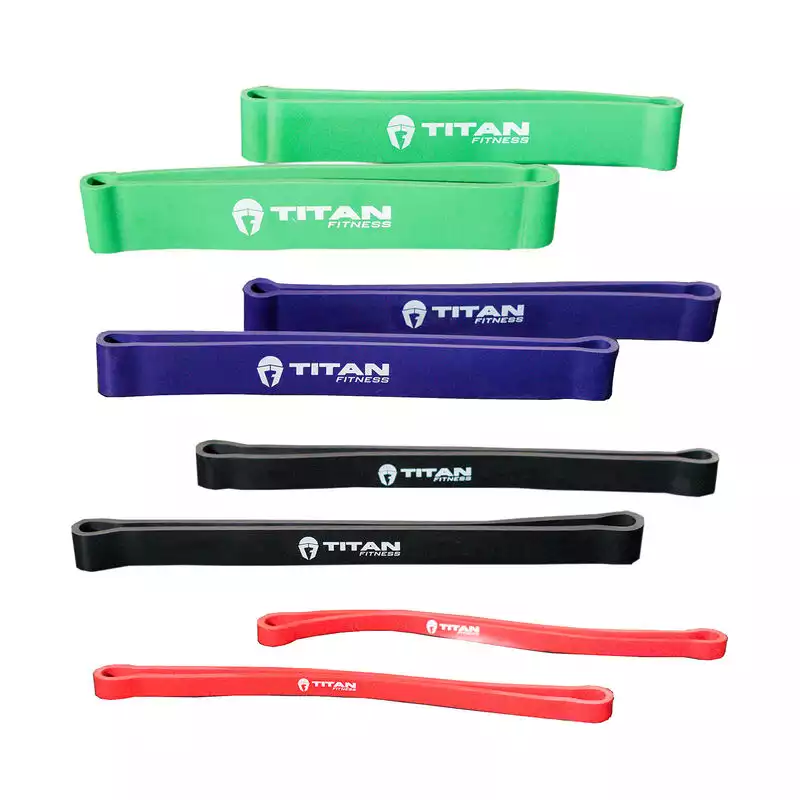

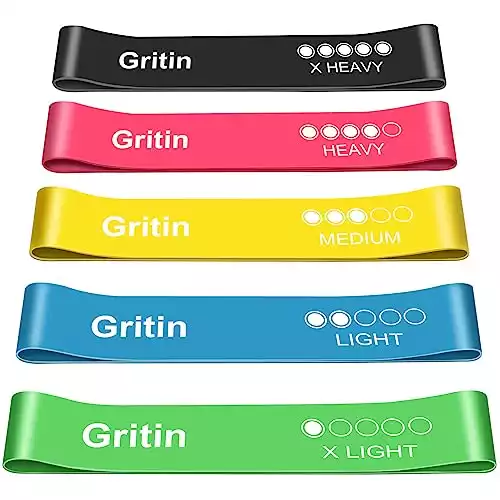

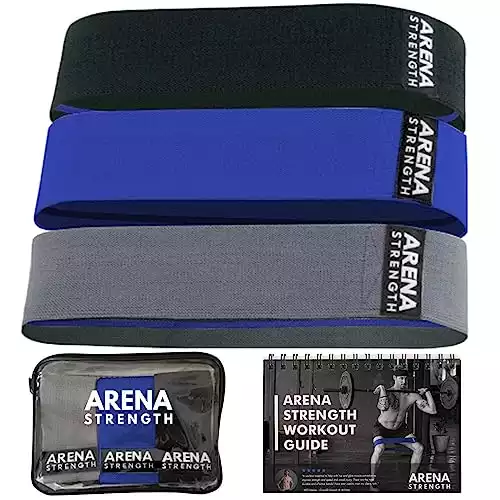














 I pretty much don’t like doctors. Some of my best friends are doctors, but they know how I feel. I have a real issue with the way modern medicine operates.
I pretty much don’t like doctors. Some of my best friends are doctors, but they know how I feel. I have a real issue with the way modern medicine operates.
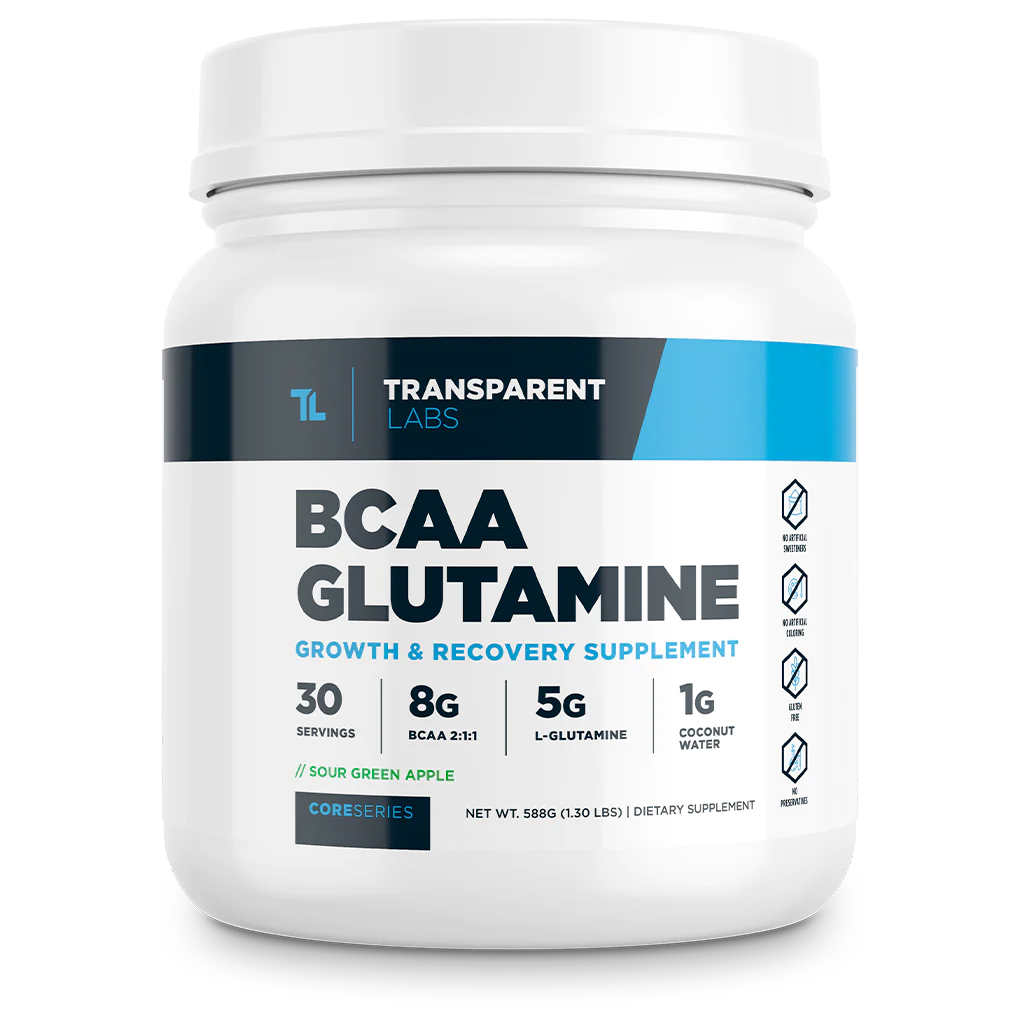
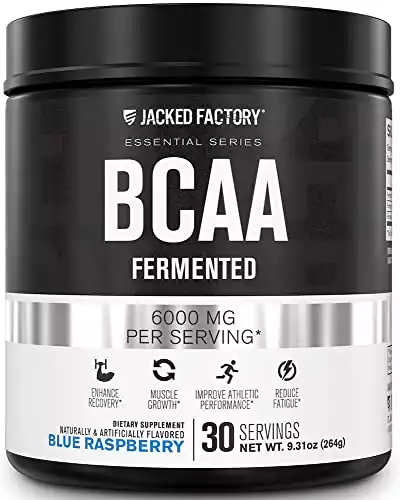
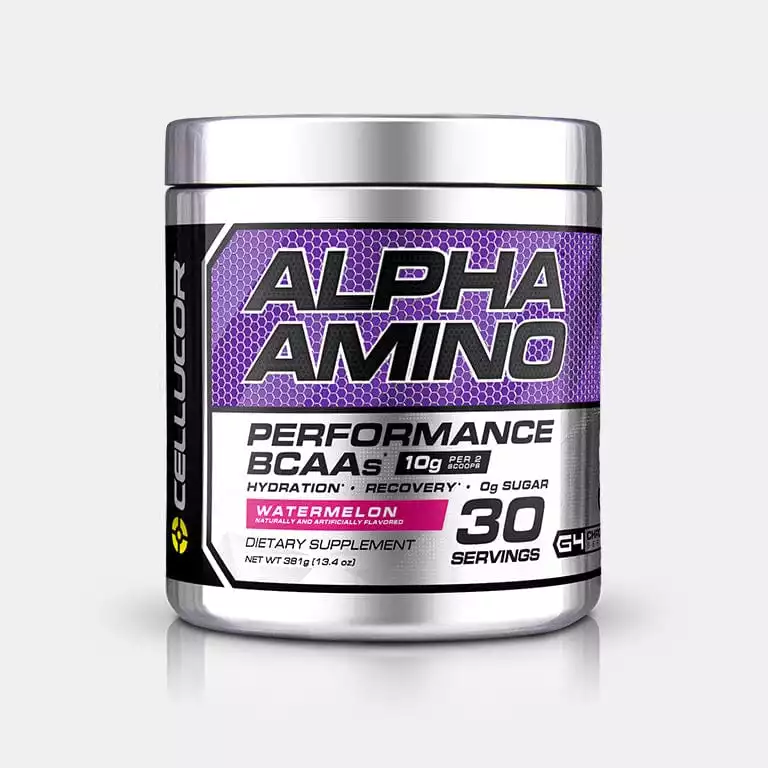

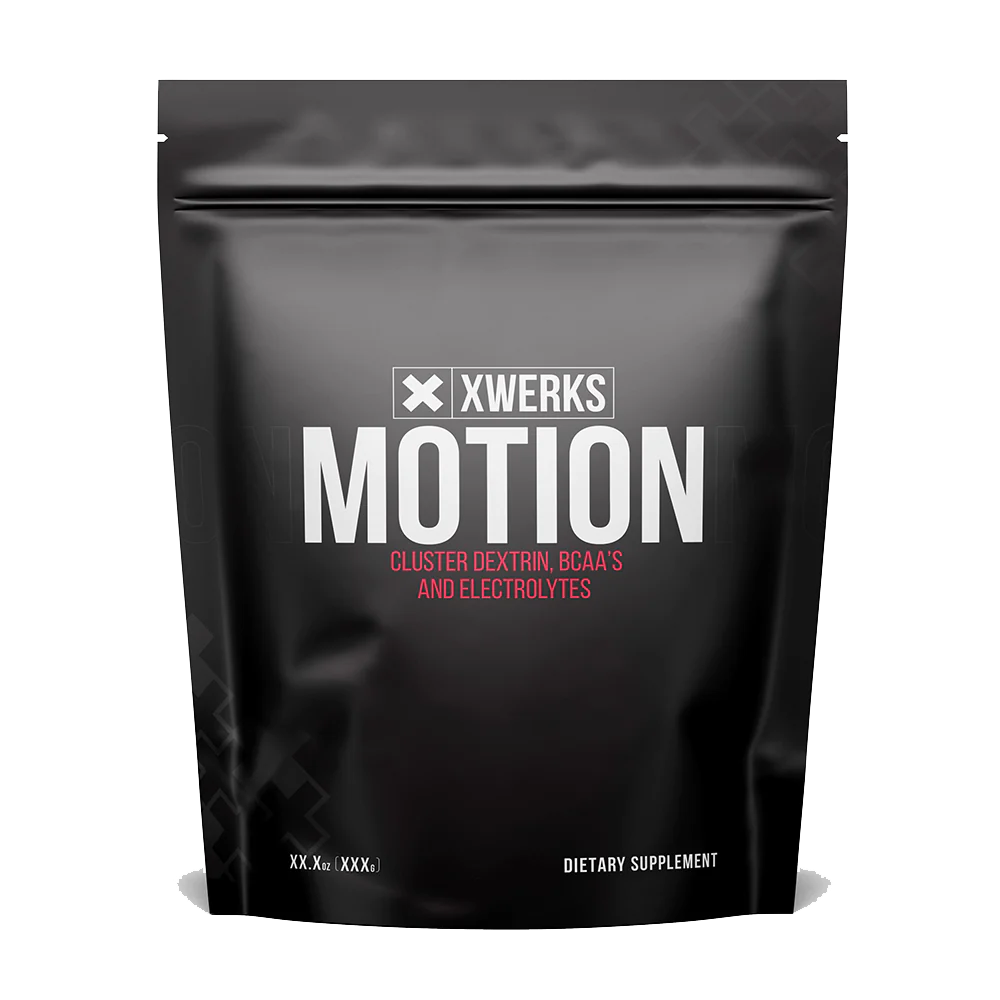
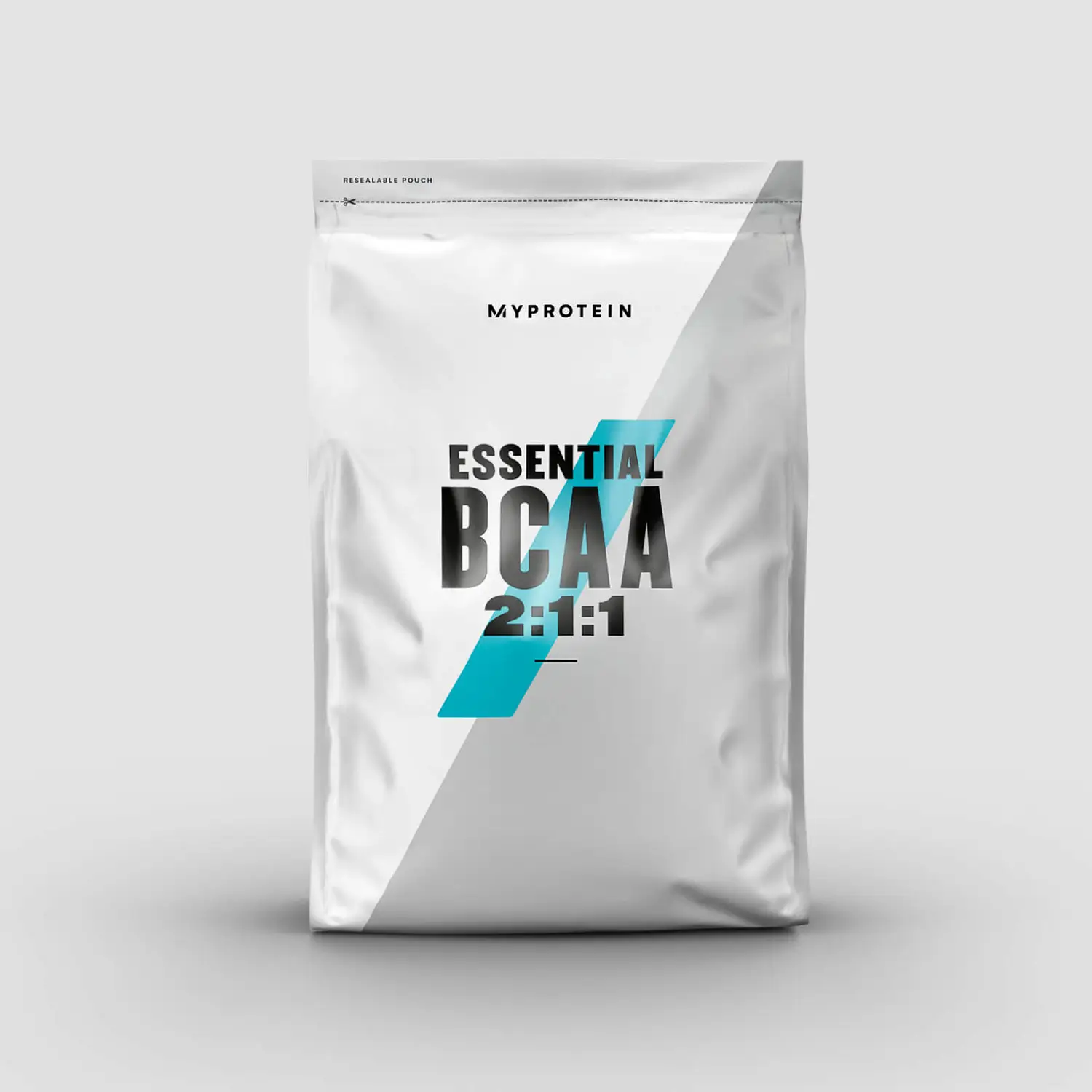
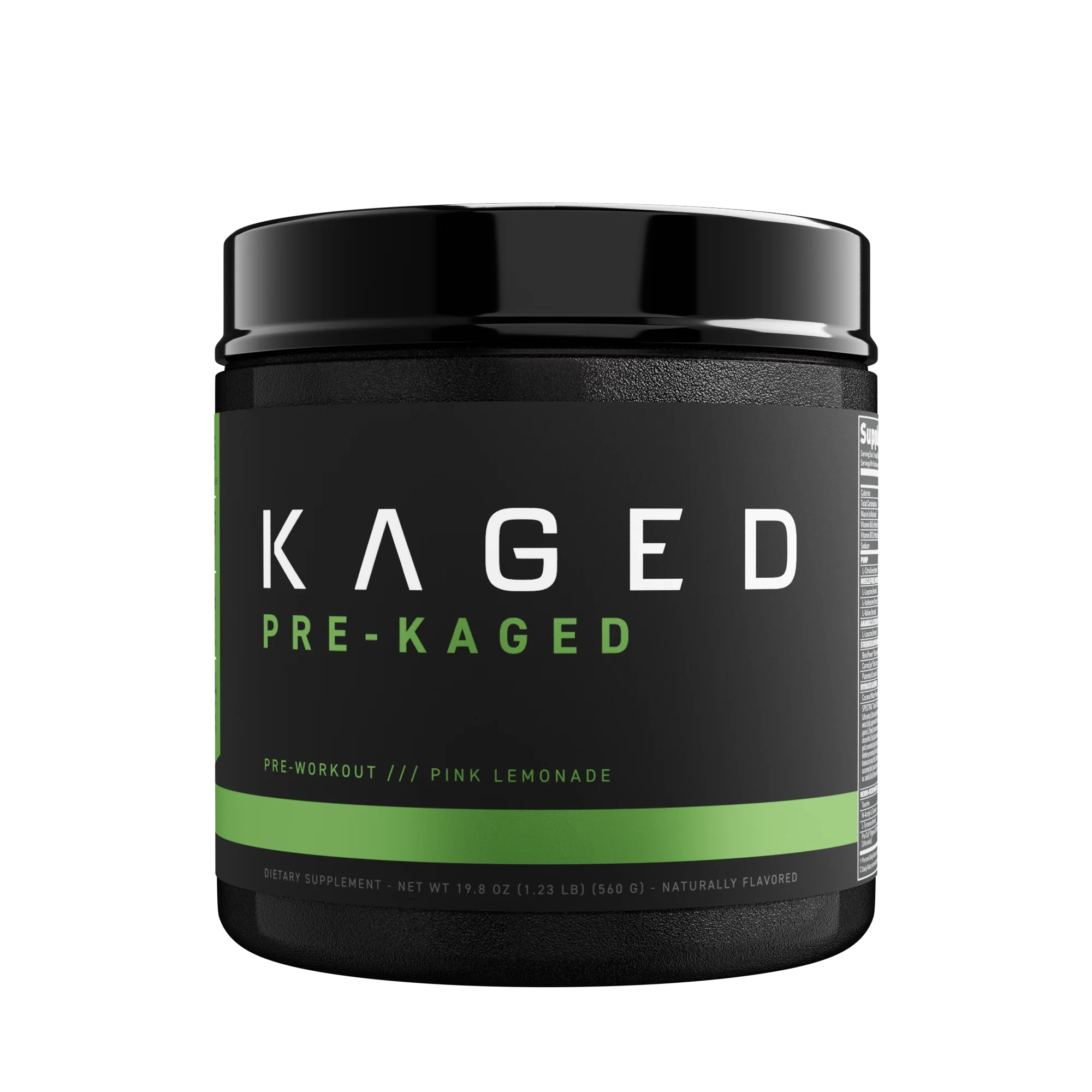
 For now classes are 6pm and 640pm at 2840 Wildwood st in the Boise Cloggers studio.
Book your class NOW!
click this ==>
For now classes are 6pm and 640pm at 2840 Wildwood st in the Boise Cloggers studio.
Book your class NOW!
click this ==>








